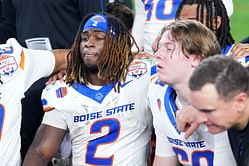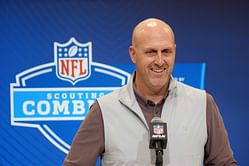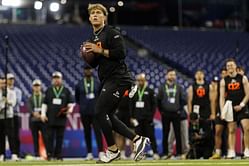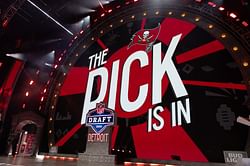The 2024 fantasy football season is just weeks away. If you’re a newbie to fantasy football, chances are that you’ve heard the term “flex” thrown around a lot. Flex is an interesting concept in the world of fantasy football and it can help you win games.
But what is “flex” all about? Do not worry if you’re feeling overwhelmed. We have you covered. The following page will explain to you everything you need to know about “flex” to get started in fantasy football.
What does flex mean in fantasy football?
To understand the concept of “flex,” you have to understand the roster formation in fantasy football. A typical starting lineup consists of a quarterback, multiple running backs, multiple wide receivers and a tight end.
This is usually the pattern followed. However there are certain leagues that allow one or two extra flexes. This is what we will be talking about.
In fantasy football, flex means having an extra roster spot in the starting lineup for replacing a particular player who can be either a quarterback or a running back or a wide receiver.
In short, flex implies flexibility.
Flex is one of the most crucial aspects of winning in fantasy football. Flex allows you to change your roster on a weekly basis. What this essentially does is it gives the fantasy football manager the flexibility to build a competitive squad to compete.
Are you gettng a trade offer in your fantasy football league? Utilise Sportskeeda's Free Fantasy Football Trade Analyzer and Calculator to assess trade proposals in redraft and dynasty leagues.
How many types of “flex” are there in fantasy football?
There are different types of flex positions to choose from and it depends on the league. One of the most common flex in fantasy football is the standard flex. In the standard league, running back, wide receiver and tight end are all eligible for flex.
Another type of flex is that of wide receivers/tight ends running backs/wide receivers. We will get to this in just a minute.
Superflex is another type of flex. In this format, the fantasy football managers get to flex the quarterback position. What essentially happens here is you replace the player with a quarterback in the starting lineup. Quarterbacks usually help you score more points on a consistent basis.
Also Read: 700+ NFL fantasy football team names to consider before 2024 season
Which player should I flex in fantasy football - Running Back or Wide Receiver?
Now comes the million-dollar question in fantasy football - Which player to flex - running back or wide receiver?
Comparing running backs and wide receivers is a very difficult job because it is hard to determine who will perform better on a weekly basis, who will be having more touches and also the injuries.
Another factor to consider apart from the roster you’ve built is the league that you play in. If you are playing in a PPR league, which allows you points for every reception, going wide receiver heavy will help you score more points. If you are playing in a standard league, also known as the non-PPR league, going running back heavy is essential.
The beauty of fantasy football is that there are no right answers. If your team has been injury ridden and it isn’t strong, going with your best player, irrespective of wide receiver or a running back, will be an obvious choice as a fantasy football manager.
Looking for a cool team name? Check out our Fantasy Football team name generator for personalized options and explore our funny fantasy football name ideas
FAQs
A. Flex in fantasy football is a feature that allows you to replace players in the roster to help you build competitive lineups and win every week.
A. Deciding which player to flex depends on multiple factors such as the type of the league and also the construction of the fantasy football team’s roster.
A. The best positions to usually flex are the running backs and wide receivers.
A. Superflex is where you can replace an existing player in the starting lineup with a quarterback, making it two quarterbacks in the starting lineup.
A. The ideal starting lineup in fantasy football is a quarterback, multiple running backs and wide receivers, one tight end, a kicker and one defense or special team.









